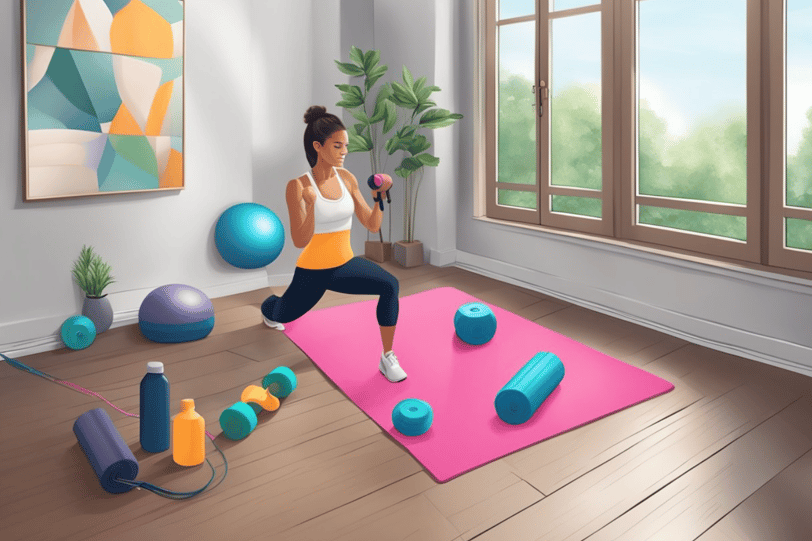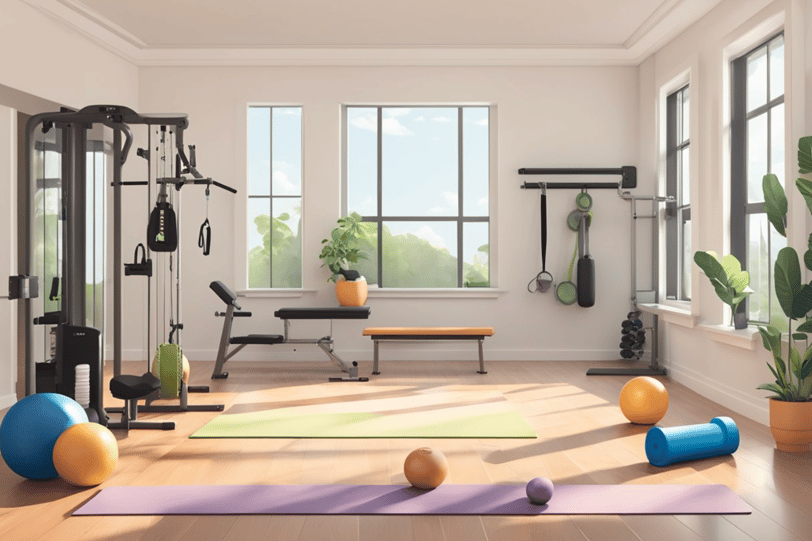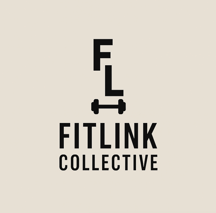
20 Effective Home Workouts That’ll Save You a Gym Membership (and Your Sanity)
Ditch the overpriced gym and reclaim your space and your schedule. Whether you’re working out in a studio apartment or just hate waiting for machines, these 20 home workouts will help you build strength, burn calories, and boost your mood no monthly fee required. All you need is a bit of space, some motivation, and maybe a pair of adjustable dumbbells and/or a yoga mat
6 min read
20 Home Workouts That'll Save You a Gym Membership (and Actually Work): Effective Fitness Solutions for Every Fitness Level
Tired of expensive gym memberships but still want to stay fit? Home workouts offer a practical solution that can deliver impressive results without the need for fancy equipment or monthly fees. Many people are discovering that effective fitness routines can be done right in their living rooms.
These 20 home workouts provide all the benefits of gym exercises while saving you money and time commuting to fitness facilities. Each routine has been selected based on effectiveness, requiring minimal or no equipment while targeting different muscle groups and fitness goals.
From high-intensity interval training to yoga flows and bodyweight strength exercises, these workouts accommodate various fitness levels and preferences. Whether you're a beginner just starting your fitness journey or an experienced athlete looking to mix up your routine, you'll find options that challenge and transform your body.
Top 10 Effective Bodyweight Exercises
Bodyweight exercises deliver remarkable fitness results without requiring equipment or gym memberships. These foundational movements build strength, enhance mobility, and improve cardiovascular health while being adaptable for all fitness levels.
Push-Ups Variations
Standard push-ups target the chest, shoulders, and triceps while engaging the core. Begin in a plank position with hands shoulder-width apart, lower your body until your chest nearly touches the floor, then push back up.
For beginners, modified knee push-ups offer an excellent starting point. Place your knees on the ground while maintaining proper upper body form.
Diamond push-ups intensify triceps engagement by positioning hands close together beneath the chest. Wide push-ups shift focus to the chest muscles by placing hands beyond shoulder width.
Decline push-ups (feet elevated) increase shoulder activation and upper chest development. For a greater challenge, try plyo push-ups with explosive movement to leave the ground momentarily.
Single-arm push-up progressions develop unilateral strength and core stability. Start with a wide stance and gradually work toward the full single-arm variation.
Squats And Lunges
Air squats form the foundation of lower body training. Stand with feet shoulder-width apart, lower until thighs are parallel to the ground while keeping chest up and knees tracking over toes.
Jump squats add explosive power by incorporating a jump at the top of the movement. This plyometric variation increases calorie burn and improves athletic performance.
Bulgarian split squats target the quadriceps and glutes asymmetrically. Place one foot on a chair or bench behind you while lowering into a lunge position.
Walking lunges develop balance and coordination while targeting the quadriceps, hamstrings, and glutes. Take a large step forward, lower until both knees form 90-degree angles, then continue with the opposite leg.
Curtsy lunges work the often-neglected hip abductors and adductors. Step diagonally behind your standing leg while maintaining an upright torso.
Core-Focused Moves
Planks engage the entire core musculature. Hold a straight-arm or forearm position while maintaining a straight line from head to heels for 30-60 seconds.
Bicycle crunches effectively target the rectus abdominis and obliques simultaneously. Lie on your back, bring opposite elbow to knee while extending the other leg.
Mountain climbers combine core stabilization with cardiovascular benefits. From a push-up position, rapidly alternate bringing knees toward chest.
Russian twists engage the rotational muscles of the core. Sit with knees bent and feet elevated, twist torso side to side while holding a weight or keeping hands clasped.
Hollow body holds develop deep core stability essential for advanced movements. Lie on your back, press lower back into the floor, and extend arms and legs while hovering limbs above the ground.
Plyometric Cardio Drills
Burpees deliver full-body conditioning through a sequence of movements. From standing, drop to a squat position, kick feet back to a plank, perform a push-up, jump feet forward, and explosively jump upward.
High knees improve running form and cardiovascular capacity. Run in place while bringing knees to hip height for 30-60 seconds.
Jumping jacks remain a classic full-body movement that elevates heart rate quickly. Begin with feet together and arms at sides, then simultaneously jump feet apart while raising arms overhead.
Box jumps develop explosive lower body power. Jump onto a stable surface (12-24 inches high) with soft landings, then step back down and repeat.
Skater jumps improve lateral agility and balance. Jump sideways from one foot to the other while sweeping the non-landing foot behind you, mimicking a speed skater's movement.
10 Equipment-Free Workouts for Any Space
These effective workouts require nothing but your body weight and determination to get results. They can be performed in limited spaces like apartments, hotel rooms, or offices while still delivering significant fitness benefits.
Full-Body HIIT Circuits
High-Intensity Interval Training (HIIT) maximizes calorie burn and cardiovascular benefits in minimal time. A basic HIIT circuit alternates 30 seconds of intense exercise with 15 seconds of rest.
Start with jumping jacks to elevate your heart rate. Move into push-ups for upper body strength, focusing on proper form rather than speed. Follow with bodyweight squats, driving through your heels and keeping your chest up.
Include mountain climbers to engage your core while maintaining cardiovascular intensity. Lunges work each leg individually while improving balance. Finish with burpees for maximum full-body engagement.
Perform 3-5 rounds of this circuit, adjusting work/rest intervals based on fitness level. Beginners might start with 20 seconds work/40 seconds rest, while advanced exercisers can try 40 seconds work/20 seconds rest.
Upper Body Blast
Targeting the arms, shoulders, chest, and back without equipment requires creativity but delivers impressive results.
Push-up variations:
Standard push-ups (chest, shoulders, triceps)
Diamond push-ups (triceps emphasis)
Wide-arm push-ups (chest emphasis)
Decline push-ups (upper chest and shoulders)
Plank shoulder taps build core stability while challenging the shoulders. Hold a strong plank position and alternately touch each shoulder with the opposite hand while minimizing hip rotation.
For back strength, try superman holds. Lie face down, then lift arms, chest and legs simultaneously, holding for 3-5 seconds. Aim for 10-12 repetitions.
Tricep dips require only a sturdy chair or sofa. Position hands on the edge, lower your body by bending your elbows, then push back up. Complete 3 sets of each exercise with minimal rest between moves.
Lower Body Strength Routine
Bodyweight lower body exercises can build significant strength and muscle when performed correctly with proper intensity.
Squat progression:
Basic bodyweight squats (3 sets of 15-20)
Pulse squats (hold at bottom, pulse 3 times)
Jump squats (add explosive element)
Single-leg squats (balance challenge)
Lunges build unilateral strength and improve imbalances. Forward lunges target quadriceps, while reverse lunges emphasize glutes and hamstrings. Walking lunges require more space but add a balance challenge.
Wall sits build isometric strength and endurance. Press your back against a wall, lower into a seated position with thighs parallel to floor, and hold for 30-60 seconds.
Include glute bridges to target the posterior chain. Lie on your back, feet flat on floor, and lift hips toward ceiling. Hold the top position for 2 seconds before lowering. Complete 3-4 rounds with 45-60 seconds rest between rounds.
Mobility And Flexibility Flow
Mobility work improves joint function while flexibility enhances muscle elasticity, both crucial for preventing injury and optimizing performance.
Begin with neck circles, moving slowly in both directions to release tension. Move to arm circles, small at first, then progressively larger to warm the shoulder joints.
World's greatest stretch combines a lunge with thoracic rotation. Step forward into a lunge, place opposite hand beside front foot, then rotate torso and reach free arm toward ceiling.
Hip mobility sequence:
Hip circles in standing position
Seated butterfly stretch
Pigeon pose variation
Standing figure-four stretch
Include dynamic hamstring stretches by swinging legs forward with controlled momentum. Cat-cow poses increase spinal mobility. Flow through these movements for 10-15 minutes, holding static stretches for 30 seconds and performing dynamic movements for 8-10 repetitions per side.
Maximizing Results With Home Workouts
Turning your living room into an effective gym requires strategic planning and consistent effort. Success depends on creating balanced routines, finding ways to increase difficulty as you improve, and measuring your progress through various metrics.
Structuring Your Weekly Routine
A well-planned weekly schedule prevents plateaus and reduces injury risk. Aim for 3-5 workout days per week with appropriate rest periods between training similar muscle groups.
Create a balanced routine that includes:
Push days: Focusing on chest, shoulders, and triceps
Pull days: Targeting back and biceps
Leg days: Concentrating on quadriceps, hamstrings, and calves
Core sessions: Strengthening abdominal and lower back muscles
Alternate between higher intensity days and recovery sessions. Recovery can include light cardio, yoga, or mobility work rather than complete rest.
Consider time-based structuring if consistency is challenging. Even 15-minute daily workouts produce better results than sporadic longer sessions.
Progression Without Weights
Without access to increasing weights, progression requires creativity. The body adapts quickly to repeated stimuli, so exercises must evolve to remain effective.
Implement these progression techniques:
Increase repetitions - Move from 8 to 12 to 15 reps as strength improves
Slow down movements - Extend the eccentric (lowering) phase to 3-5 seconds
Decrease rest periods - Reduce recovery between sets from 90 to 60 to 45 seconds
Add isometric holds - Pause at the most challenging position for 3-10 seconds
Leverage body positioning to increase difficulty. Elevating feet during push-ups or moving hands closer together intensifies resistance without equipment.
Exercise variations provide new challenges. Progress from standard push-ups to diamond push-ups, archer push-ups, and eventually one-arm variations.
Tracking Progress at Home
Monitoring improvement maintains motivation and helps identify effective approaches. Physical measurements provide objective feedback about workout effectiveness.
Record these key metrics:
Body measurements (waist, hips, chest, arms, thighs)
Body weight (if relevant to goals)
Performance markers (max reps, hold times, workout completion times)
Take progress photos every 2-4 weeks under consistent conditions (lighting, pose, time of day). Visual changes often appear before measurement changes.
Use a simple workout journal or fitness app to track exercise performance. Note repetitions completed, perceived exertion, and how quickly you recover.
Reassess your fitness level monthly with benchmark tests. Time yourself completing a specific routine or count maximum repetitions of a particular execise to quantify improvements.




